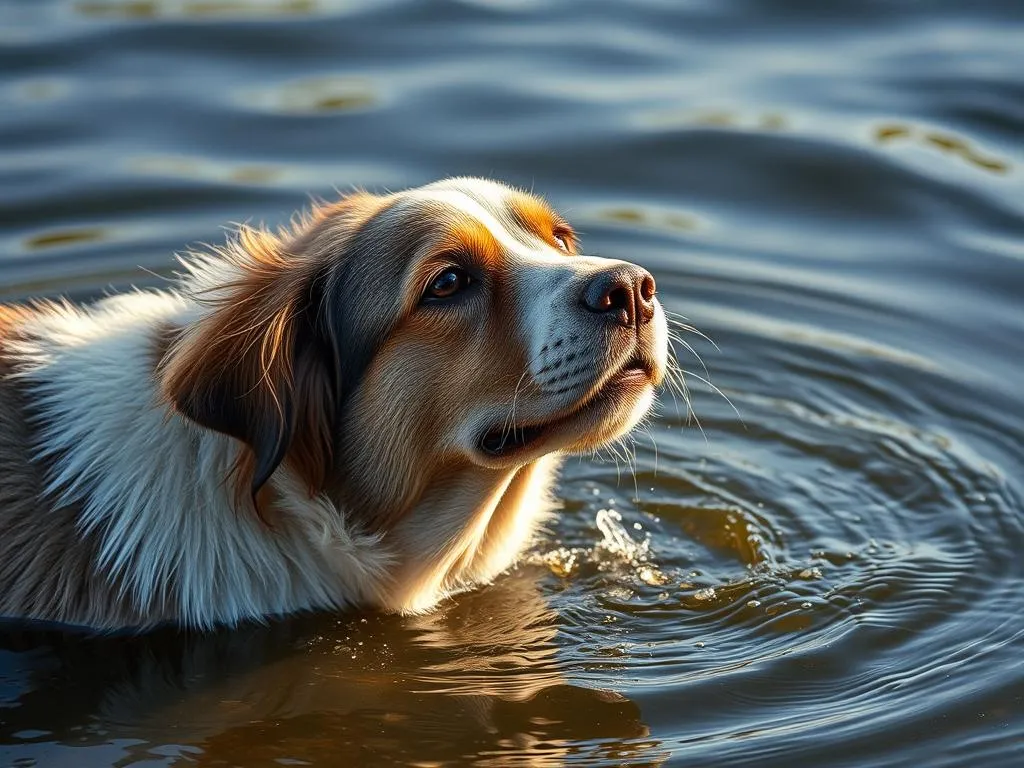
Introduction
Many dog owners dream of their furry friends joyfully splashing around in water, whether it’s at the beach, in a lake, or even in a backyard kiddie pool. However, not all dogs share this enthusiasm. Some may shy away from water, displaying fear or discomfort. Understanding how to get your dog to like water can lead to delightful moments and enhance your pet’s overall well-being.
While every dog is unique, there are common reasons why some dogs are afraid of or dislike water, including negative past experiences, breed characteristics, or simply a lack of exposure during their formative months. This article aims to provide actionable tips and techniques for acclimating your dog to water, fostering a positive relationship with this essential element.
Understanding Your Dog’s Relationship with Water
Reasons Dogs May Dislike Water
Dogs have varied relationships with water, which can stem from several factors:
- Past Negative Experiences: If a dog has had a traumatic experience with water, such as a frightening bath or a near-drowning incident, it may develop a lasting aversion.
- Natural Instincts and Breed Characteristics: Some breeds, like the Irish Water Spaniel or Labrador Retriever, are naturally drawn to water, while others might have instincts that lead them to avoid it.
- Lack of Early Exposure: Dogs that haven’t been exposed to water early in their development may lack the confidence to explore it later in life.
Benefits of Water for Your Dog
Water can offer numerous benefits to your dog, including:
- Physical Exercise and Fitness: Swimming and playing in water provide excellent exercise, helping to keep your dog fit and healthy.
- Mental Stimulation and Sensory Experiences: Water introduces new sights, sounds, and smells that can enrich your dog’s sensory world.
- Socialization Opportunities: Water activities often involve other dogs and people, providing valuable socialization experiences.
Preparing Your Dog for Water
Assessing Your Dog’s Comfort Level
Before introducing your dog to water, it’s crucial to assess their comfort level. Look for signs of fear or distress, such as:
- Tension in the body
- Whining or barking
- Cowering or attempting to escape
Observational techniques can help you gauge your dog’s comfort. Take note of their reactions to water from a distance before approaching closer.
Choosing the Right Environment
Selecting the right environment is key to a positive water introduction:
- Safe and Shallow Water: Start with a shallow area, like a kiddie pool or a calm lake, where your dog can stand comfortably.
- Avoid Crowded Areas: Choose quiet times to introduce water, avoiding crowded or noisy locations that could overwhelm your dog.
Step-by-Step Guide to Introducing Your Dog to Water
Gradual Exposure
Begin the water introduction process gradually:
- Starting with a Dry Environment: Use wet toys or sprinkle some water on their favorite toys to create a connection between play and water.
- Slow Water Play at Home: Introduce damp towels or splashing them lightly in a safe area to help your dog become accustomed to the sensation of water.
Positive Reinforcement Techniques
Using positive reinforcement can make the process enjoyable for your dog:
- Treats and Praise: Whenever your dog approaches or interacts with water, reward them with treats and verbal praise to reinforce positive behavior.
- Incorporate Favorite Toys: Bring along their favorite toys to engage them in play and create a fun atmosphere around water.
Structured Water Play Sessions
Plan structured sessions to build familiarity:
- Short, Engaging Sessions: Keep initial sessions brief to avoid overwhelming your dog. Gradually increase the duration as they become more comfortable.
- Incorporate Games: Play games like fetch or splash around with your dog to make water play fun and exciting.
Overcoming Fear and Anxiety
Identifying Triggers
Understanding what specifically triggers your dog’s fear is essential:
- Common Triggers: Loud noises, sudden splashes, or unfamiliar water environments can all cause stress.
- Desensitization Techniques: Gradually expose your dog to these triggers in a controlled manner to help them adapt.
Building Confidence
Building your dog’s confidence in water situations is crucial:
- Gradual Challenges: Introduce challenges that are slightly more demanding than their current comfort level. This could mean moving from standing in shallow water to gently wading deeper.
- Celebrate Small Victories: Acknowledge and reward every step forward, no matter how small, to encourage continued progress.
Safety Considerations
Supervision and Control
Safety should always be a priority:
- Monitor Your Dog: Keep a close eye on your dog during all water activities to ensure they are safe and comfortable.
- Use a Leash or Long Line: This can help you maintain control, especially in open water environments or when introducing them to new areas.
Recognizing Signs of Distress
Being attentive to your dog’s body language is vital:
- Signs of Fear or Discomfort: Look for signs such as trembling, excessive panting, or attempts to escape.
- Immediate Steps: If your dog appears stressed, calmly remove them from the water and give them time to relax before trying again.
Alternatives to Traditional Water Introduction
Water Activities
Explore creative ways to engage your dog with water:
- Dog-Friendly Water Sports: Consider introducing your dog to activities like dock diving or paddleboarding, which can be fun and help them learn to enjoy water.
- Structured Classes: Look for local classes or playgroups that focus on water play, providing a guided introduction in a controlled environment.
Engaging Alternatives
If your dog remains hesitant, you can simulate water experiences:
- Water-Themed Toys: Introduce toys like water sprinklers or splash pads that allow your dog to engage with water without the pressure of deep swimming.
- Creative Simulations: For instance, set up a small splash zone in the yard with buckets of water or a hose, allowing your dog to explore at their own pace.
Conclusion
Helping your dog embrace water is a rewarding journey that strengthens your bond and provides numerous benefits for their physical and mental well-being. By understanding their fears, providing gradual exposure, and using positive reinforcement, you can transform water from a source of anxiety into a source of joy. Remember to be patient and persistent in your training efforts; with time, your dog can learn to love water just as much as you do.
As you embark on this adventure together, cherish the moments of exploration, play, and growth that will deepen your connection through shared experiences in the water.









